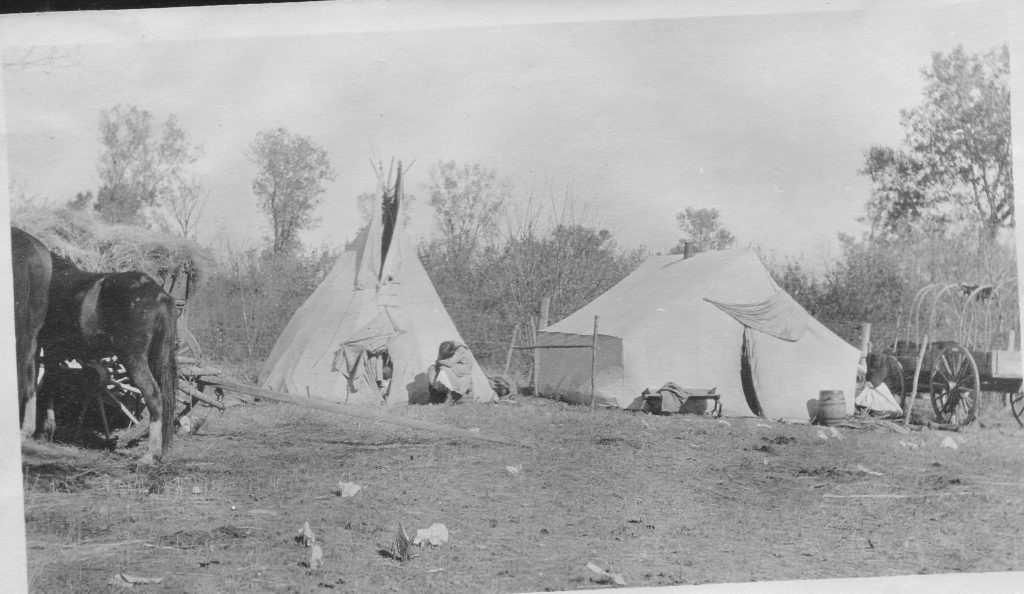Ripples from the Dunes, by Kennedy Zittle, Assistant Naturalist
Recently there has been a new visitor to the bird feeders outside of my office window. Though I appreciate the daily visits from 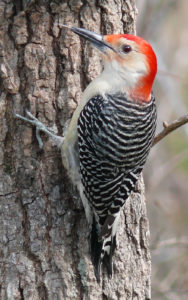 the same birds – chickadees, house finches, cardinals, and juncos… it is nice to see a new visitor hanging around (literally). This visitor has been spotted hanging from the suet feeder, seemingly oblivious to the chickadees and house finches squabbling at the feeder below it. When I was little, I used to sit and watch outside of my grandparents’ windows to see this bird hanging down from the suet feeders that they had in the trees. For some reason it became one of my favorite birds, and seeing it now always brings a smile to my face, as it feels like a visit from an old friend.
the same birds – chickadees, house finches, cardinals, and juncos… it is nice to see a new visitor hanging around (literally). This visitor has been spotted hanging from the suet feeder, seemingly oblivious to the chickadees and house finches squabbling at the feeder below it. When I was little, I used to sit and watch outside of my grandparents’ windows to see this bird hanging down from the suet feeders that they had in the trees. For some reason it became one of my favorite birds, and seeing it now always brings a smile to my face, as it feels like a visit from an old friend.
This visitor is more formally known as the red-bellied woodpecker (Melanerpes carolinus). These birds live in the eastern portion of the United States and range from as far south as Florida to as far north as Canada. They are often found living in deciduous forests, especially along rivers and in swamps.
Around here it is difficult to see the red coloration that this bird is named after. Farther south the red is more noticeable on the bird’s stomach feathers. The first thing I notice when I see this bird is its bright red cap that extends down the back of its neck. That name however was already taken by the red-headed woodpecker, which is another woodpecker that could be seen around woodland dunes. Years ago it was much more common to see a red-headed woodpecker (distinguished by their entirely red head), however, with climate change the red-bellied woodpeckers that used to be more common in the south have begun to shift further north and took the place of the red-headed woodpecker.
The red-bellied woodpecker makes a variety of different calls. The most common one is a shrill “churr churr churr” sound that both the males and females make. Other sounds include a purring type sound “qurrr”, a series of “kek” notes (similar to a Northern Flicker’s call), and a “cha cha cha” sound similar to a coughing noise. These woodpeckers also drum (drumming is when the bird hammers their beak against a loud or resonant object). They will drum on hollow trees, metal roofs and gutters, etc. to get their sounds to travel to other woodpeckers nearby.
Red-bellied woodpeckers are omnivores. They mainly eat insects, but also eat fruits, nuts, and seeds. A red-bellied woodpecker can stick its tongue out nearly 2 inches past the end of its beak – this helps them reach insects from the insides of the trees. Speaking of trees, like many other animals, these woodpeckers rely on dead and dying trees for their nests and food sources. These woodpeckers will excavate holes in dead, dying, or soft-wooded trees. By doing this they are not only creating a home for themselves, but also help out other forest animals too. Other animals like squirrels and bats use their holes for shelter. Recent studies have found that in areas where dead trees were removed the red-bellied woodpecker’s breeding rates greatly decreased. Keeping dead trees (where they do not pose a danger to anyone walking around) is a great way to help maintain the habitat that so many forest animals rely on.
As I finish writing this, the red-bellied woodpecker is sitting on the trunk of the cherry tree, surveying the feeders as he does with each visit before he swoops down to the suet. It is another wonderful day here at the dunes, with wonderful visitors, both human and birds alike.
photo: Red-bellied woodpecker, wikipedia
Written by Nancy Nabak, Communications Coordinator for Woodland Dunes
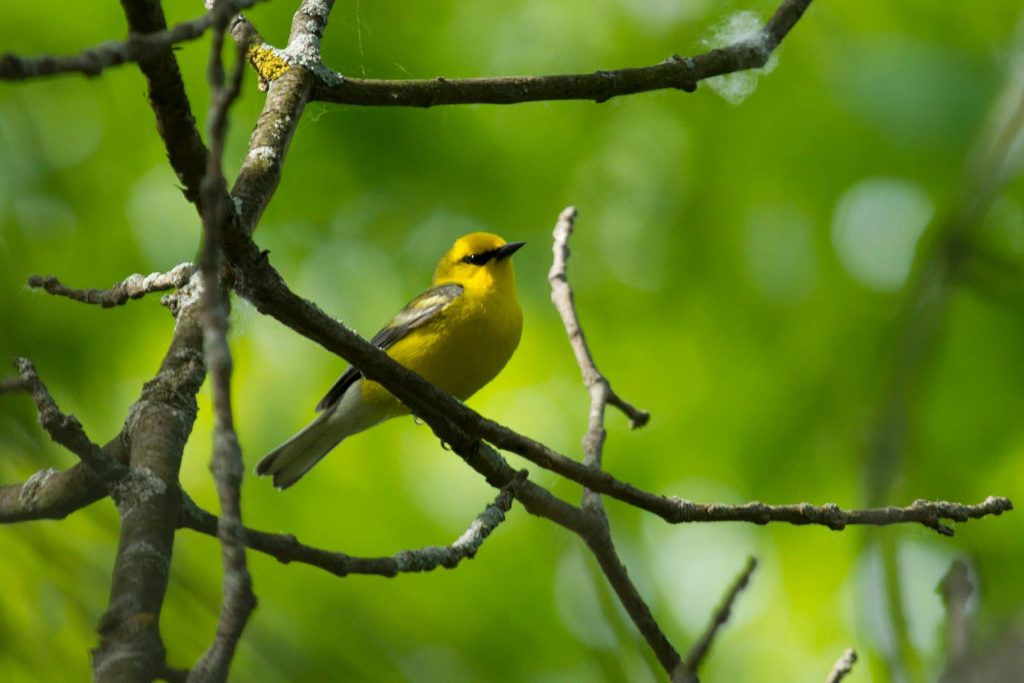 January is upon us and so are resolutions. Because we know too many of our bird species are in trouble, I’m resolving to do more for them this year than ever before. This is my personal choice, but I also share this challenge with you.
January is upon us and so are resolutions. Because we know too many of our bird species are in trouble, I’m resolving to do more for them this year than ever before. This is my personal choice, but I also share this challenge with you.
The National Audubon Society has just hosted its 122nd annual Christmas Bird Count. This tradition started in 1900, urging citizens to count instead of hunt birds on Christmas day. Prior to this conservation effort, it was popular in the 1800s for hunters to engage in a holiday tradition known as the Christmas “Side Hunt.” They would choose sides and go afield with their guns—whoever brought in the biggest pile of feathered quarry won.
Thank goodness times have changed and whole-systems thinking has taken a stronger foothold in our culture. By counting our bird species on Christmas day rather than shooting, we have learned much more about them, including migration behaviors, population trends, and rare sighting occurrences.
This year, let’s resolve to learn more about our birds. In fact, let’s get to know the bird that motivated us to start feeding them in the first place. Or the one that inspired us to take up photography. The one that convinced us to join a birding club, take a hike, or go on a field trip with other like-minded people. Let’s learn about the bird that brings us the most joy each spring when it returns. This is our spark bird. Then, let’s take another step and make a monetary contribution in its name to an organization that supports bird conservation activities.
I offer this challenge because we know climate change, agricultural chemical use, and habitat loss are all real threats. This behooves us to move the needle in favor birds. And we know if it’s good for the birds, it’s good for us.
Spark Bird Challenge:
Step 1: Identify your spark bird or bird of interest and write one, two, or three sentences about that bird and send it to me via email: nancyn@woodlanddunes.org
Step 2: Donate a financial gift to an organization of your choice – committing to making a difference personally. Note, if only 100 people read this and each donated $20 to conservation efforts, we’d see a $2,000 value invested in the good of bird protection. Believe it or not, $2,000 goes a long way in the bird world. Please do what you can.
Step 3: We’ll publish the bird you choose to honor and your write up on Facebook and possibly in our next newsletter. Your donation amount will be kept confidential. Fun bonus: We’ll enter you in our Spark Bird Challenge drawing for a Woodland Dunes cap, T-shirt, or hiking stick.
Step 4: Feel good about knowing you actually did something to help move that needle. You do make a difference, and collectively, we have great impact. If you’d like to take it a step further, please contact your elected officials and share your concerns. We need their help, too.
Let’s start the new year off with resolve for our birds.
Photo: Blue-winged warbler at Woodland Dunes by Nancy Nabak
Ripples from the Dunes by Nancy Nabak, Communication Coordinator
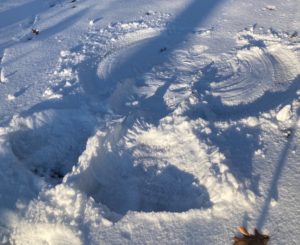 When the white stuff falls, I don’t go south. Instead, I don my boots, snow pants, and coat and pride myself in being one of the first to make a snow angel on the block. (Yep, even though I’m closer retirement than performing at a grade school Christmas program.)
When the white stuff falls, I don’t go south. Instead, I don my boots, snow pants, and coat and pride myself in being one of the first to make a snow angel on the block. (Yep, even though I’m closer retirement than performing at a grade school Christmas program.)
Snow brings romance at a time of the year when it seems to be needed. The epic success of the classical movie “White Christmas” says it all. But there’s so much more to snow than singing about it on a train to Vermont.
Snow is critically important to our ecosystem. For one thing, as it relates to humans, our spring and summer water resources depend on the meltwater from snow. And then there’s the subnivium. The subnivium is a seasonal world beneath the snow’s surface (also known as nature’s igloo), that’s insulated and maintains a constant temperature.
The subnivium concept is intriguing to me so I’ve done a little more research and as it turns out, UW-Madison scientists, Jonathan Pauli and Ben Zuckerberg, are asking and studying the question: what happens if snow disappears in a warming climate?
Pauli and Zuckerberg believe that warmer winters will reduce the subnivium’s duration, depth and insulation. They tested their theory with a model based on what the Great Lakes will be like in 2050. According to an article in The Science Explorer, their results demonstrated the subnivium showed a larger temperature variation and decreased — not increased — temperatures, because without enough snow, temperatures fell due to this loss of insulation.
“In a warmer world with less snow, winter soils would be colder because the insulating snow layer on top is reduced,” said Henry Gholz, a program director in NSF’s Division of Environmental Biology. “That has implications for farmers planting crops in spring, as well as for the many burrowing mammals, microbes and insects that overwinter in snow.” These changes will also have important impacts on species that need the subnivium to survive, Zuckerberg says, “and will lead to large-scale shifts in their ranges.”
Climate change is a big pill to swallow, and on the surface, a bit overwhelming. But if we believe collectively, we can do better for future generations of all life forms on earth, (we have already demonstrated this through human intervention and the come back of endangered plant and animal lives) we can create change. Click on this link to find some ideas through the National Oceanic and Atmospheric Administration:
https://www.climate.gov/news-features/climate-qa/what-can-we-do-slow-or-stop-global-warming
This is the season of hope. The season of believing. Please find a way to do something in your corner of the world to help our earth and to ensure our neighbor’s children can enjoy the gift of making snow angels well into the future.
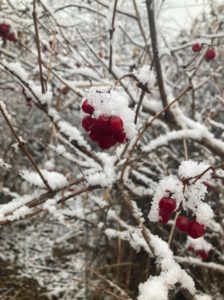 crawling on the driveway on the 16th of December. The weather seems to swing wildly now, instead of the rock-solid cold of much of the past. According to the USEPA, the climate has warmed 2 degrees F in the past 100 years. That doesn’t sound like much, but it is, and it affects many aspects of the world around us. It results in less snow, more ice, and greater fluctuations in both temperature and precipitation. It will result in more precipitation in the summer, and more events which are extreme in terms of precipitation and result in flooding. Winter sports are likely to be hampered, agricultural output may be reduced, and migratory birds will have to adjust their timing during migration. Still, the overall impact on the Great Lakes is something we don’t understand- warmer water may favor bass over trout and other cold-water fish. And warm- loving trees and other plants over the colder species. It is likely that the changes will be gradual, but in the end profound.
crawling on the driveway on the 16th of December. The weather seems to swing wildly now, instead of the rock-solid cold of much of the past. According to the USEPA, the climate has warmed 2 degrees F in the past 100 years. That doesn’t sound like much, but it is, and it affects many aspects of the world around us. It results in less snow, more ice, and greater fluctuations in both temperature and precipitation. It will result in more precipitation in the summer, and more events which are extreme in terms of precipitation and result in flooding. Winter sports are likely to be hampered, agricultural output may be reduced, and migratory birds will have to adjust their timing during migration. Still, the overall impact on the Great Lakes is something we don’t understand- warmer water may favor bass over trout and other cold-water fish. And warm- loving trees and other plants over the colder species. It is likely that the changes will be gradual, but in the end profound.Photo- highbush cranberries at Woodland Dunes by Nancy Nabak, December 2021

